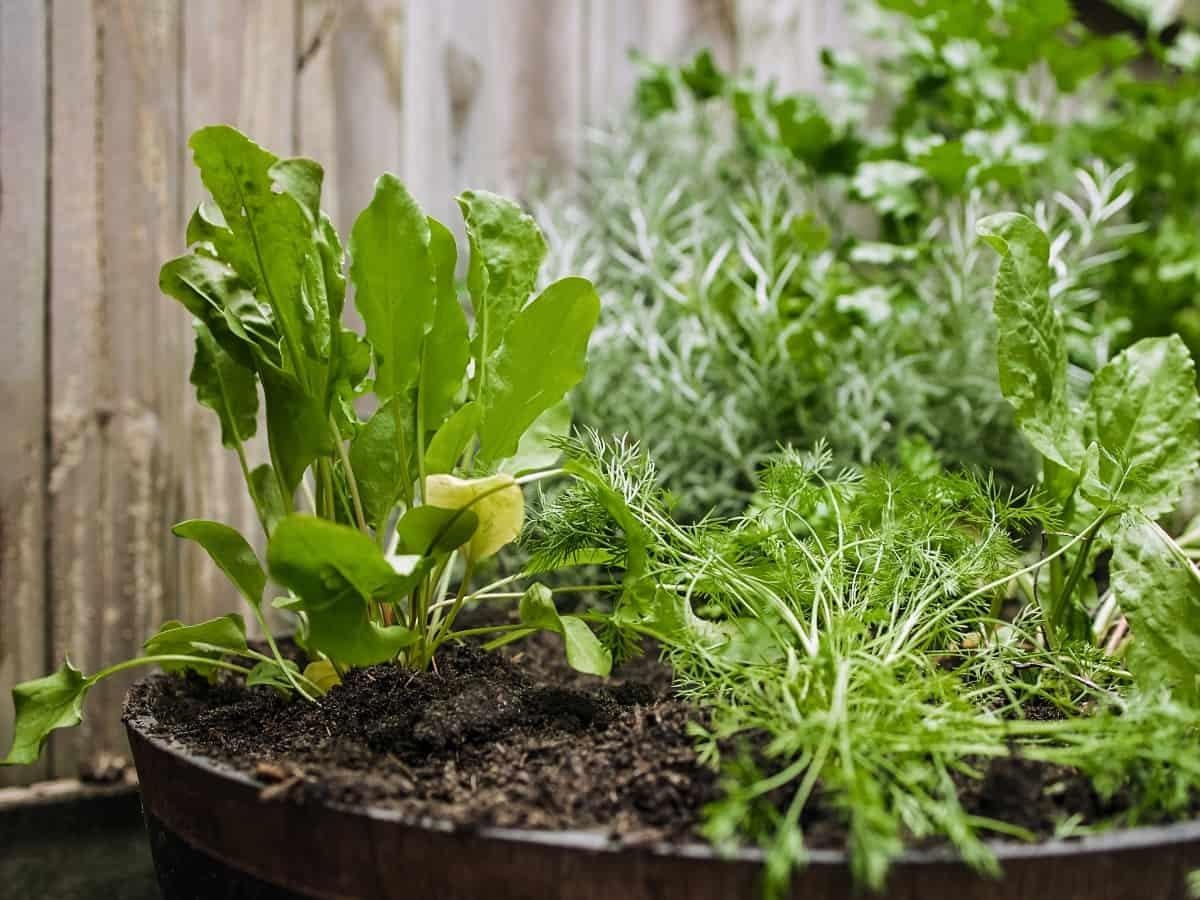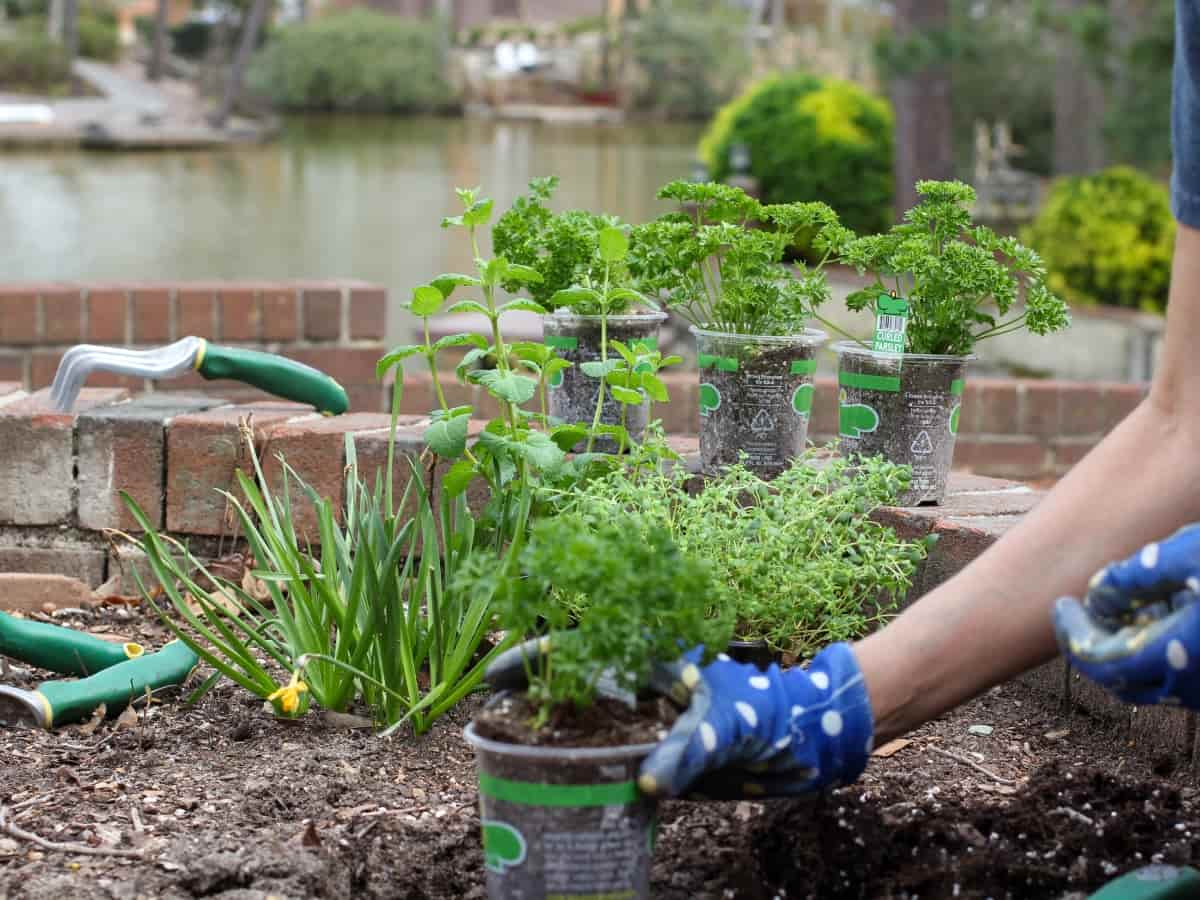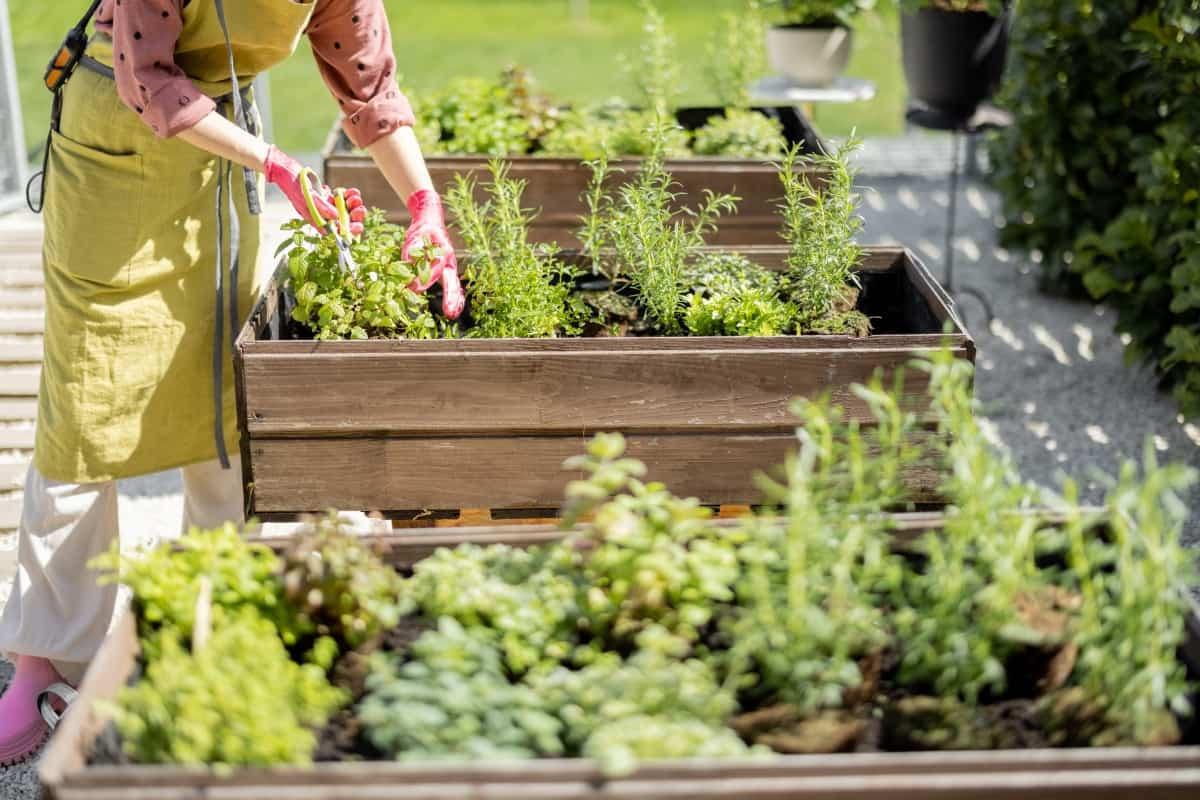Companion planting involves strategically placing different plants together to benefit each other, whether by repelling pests, attracting beneficial insects, or enhancing flavors. It involves strategically pairing different plants together to benefit each other. In herb gardening, this means pairing herbs with other plants that can support their growth and enhance their flavor profiles.

Benefits of Companion Planting for Herbs
The major advantage is natural pest control – certain herb combinations can help repel pests, reducing the need for harmful pesticides. Additionally, companion planting enhances soil health by promoting biodiversity and nutrient cycling. Different plants have varying root structures that benefit the soil in unique ways, leading to a healthier and more fertile earth for your herbs to thrive in.
This practice also helps with weed suppression, as densely planted areas leave little room for unwanted invaders to take hold. Moreover, companion planting encourages pollination by attracting beneficial insects to your garden. These pollinators play a crucial role in ensuring successful herb growth through proper fertilization.
Herb Companion Planting Basics
Different herbs have specific needs and benefits when paired together strategically. Firstly, consider the growth habits of each herb you want to plant together. Some herb plants thrive in full sun, while others prefer partial shade. Matching compatible herbs based on their sunlight requirements can optimize growth.
Think about the soil preferences of your chosen herbs. For example, some herbs like well-drained soil, while others enjoy moisture-retentive conditions. Pairing herbs with similar soil needs can prevent competition for nutrients. Planting taller herbs at the back of a bed and shorter ones in front maintains sunlight access for all.
Best Companion Plants for Popular Herbs
Some popular herbs have natural companions that not only enhance their development but also help repel pests and attract beneficial insects. For example, basil thrives when planted alongside tomatoes, as the strong scent of basil can deter pests that typically target tomato plants.
In case you missed it: Best Herbs for Tea Garden: What to Grow in a Tea Garden

Rosemary is known to benefit from being near sage or thyme. Mint varieties often flourish when planted near chamomile or parsley, while chives do well alongside carrots or strawberries. These strategic pairings not only promote healthier plants but also contribute to a more vibrant and diverse garden ecosystem.
Designing Your Companion Herb Garden
When designing your herb garden, consider the growth habits, nutrient needs, and compatibility of different herbs to maximize their potential. Grouping herbs that support each other’s growth can lead to healthier plants and increased yields. It is a fun and creative process that allows you to maximize the growth and flavor of your herbs. When planning your garden layout, consider the sunlight requirements of each herb to ensure they thrive together.
Group herbs with similar water needs to simplify irrigation tasks and promote healthy growth. Pay attention to sun exposure and water requirements when deciding where to plant each herb. Please take into account the height and spread of each plant when arranging them in your garden beds or containers. Experiment with different combinations to discover which plants complement each other best in terms of flavor, scent, and pest-repelling properties.
Managing Pests and Diseases with Companion Planting
By strategically pairing herbs with other plants that have natural pest-repelling properties, you can create a more resilient ecosystem. Some common pests are aphids, those tiny sap-sucking insects that can wreak havoc on tender herb leaves. Caterpillars may also make an unwelcome appearance, munching away at your precious plants with voracious appetites.
Powdery mildew is another sneaky culprit that loves to take residence in warm and humid conditions, coating your herbs with a fuzzy white layer. Root rot can silently strike if soil drainage isn’t optimal, causing wilting and yellowing of leaves as the roots suffocate. For example, planting basil alongside tomatoes can help repel tomato hornworms due to the strong scent of basil. Marigolds are another excellent companion plant known for deterring nematodes in the soil, benefiting neighboring herbs like rosemary or thyme.
Improving Soil Health Through Companion Planting
Certain herbs can attract beneficial insects that help aerate the soil and ward off harmful pests. This natural pest control not only protects your herbs but also enriches the soil without the need for harsh chemicals. Additionally, some companion plants are known for their nitrogen-fixing properties; they can help replenish essential nutrients in the soil.
In case you missed it: Top 16 Perennial Herbs You Can Plant Once and Enjoy for Years

When herbs are strategically grouped, they can work symbiotically to enhance soil fertility. For instance, planting nitrogen-fixing herbs like clover alongside heavy feeders such as basil can help maintain a balanced nutrient level.
Watering Strategies for Companion Herb Gardens
Watering your companion herb garden is crucial for the health and vitality of your plants. Each herb has its own watering requirements, so it’s essential to understand each plant’s individual needs. Some herbs, like basil and mint, prefer consistently moist soil, while others, like rosemary and thyme, thrive in drier conditions.
A good rule of thumb is to water deeply but encourage deep root growth. Early morning is generally the best time to water your herb garden as it allows foliage time to dry before evening, reducing fungal diseases. Observing your plants regularly will help you adjust your watering schedule according to their specific needs.
Harvesting and Utilizing Companion-Planted Herbs
Harvesting is a rewarding experience that allows you to maximize the growth and flavor of your garden. When it comes time to harvest, make sure to pick herbs early in the day when their essential oils are at their peak. This ensures the best flavor and aroma in your dishes. To preserve your freshly harvested herbs, consider drying them by hanging them upside down or using a dehydrator.
In case you missed it: Natural and Organic Ways to Treat Herbs Leaf Curl: Fix With Effective Home Remedies

You can also freeze herbs in ice trays with water or oil for later use in cooking. Another option is making herb-infused oils or vinegar to add a layer of flavor to your meals. When cooking with companion-planted herbs, experiment with different combinations to enhance the taste profile of your dishes. Whether you’re adding basil to a tomato sauce or mint to a refreshing drink, incorporating fresh herbs will elevate your culinary creations.
Troubleshooting Common Issues in Companion Herb Gardens
One challenge could be overcrowding – make sure to give each plant enough space to thrive. Another issue is nutrient competition, so consider the needs of each herb when planting them together. If you notice yellowing plant leaves, it might be a sign of nutrient deficiencies. Try adding organic fertilizer or compost to boost soil health. Pests can also cause problems in your herb garden; consider planting pest-repelling herbs like basil or marigolds nearby.
Keep an eye out for signs of disease, such as moldy spots or wilting leaves. Proper watering and good airflow can help prevent these issues. Furthermore, companion planting promotes biodiversity in the garden, creating a harmonious balance that mimics natural ecosystems. This contributes to the overall health of the garden and also reduces the need for synthetic fertilizers, making it a more environmentally friendly approach to gardening.
- How to Grow Hibiscus from Flower
- Plantation Ideas for Home Decoration: A Beginners Guide
- Flower Garden Designs and Layouts for Beginners
- Planting and Spacing Techniques in Papaya: A Beginner’s Guide
- Growing Gold: Essential Techniques for Planting Pineapples
- How to Make Kalanchoe Plant Bushy: Home Remedies and Solutions
- 11 Reasons Why Your Gardenia is Not Blooming: Home Remedies and Solutions
- Eco Elegance: The Guide to Designing a Drought-Tolerant Landscape
- Gardening on a Slope: Strategies for Hillside Landscaping